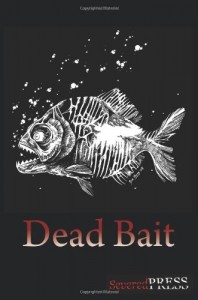You prepared your manuscript with care, followed the market’s submission guidelines, and sent your story along. Sad to say, it got rejected, but you got over that and decided to send it to the next market on your list. Now you’ve found the new market requires stories submitted in a different format. In fact, it appears there are almost as many manuscript formats as there are markets! What’s the deal?
In truth, there are some standards shared by a few markets. These include William Shunn’s “Proper Manuscript Format,” Vonda N. McIntyre’s “Manuscript Preparation — Introduction,” and, for ebooks, Mark Coker’s Smashwords Style Guide. But in general each market has its own quirks and differences. Some markets (bless ‘em!) don’t really care; they just want to read your story!
In what ways are the formats different? Some markets like a single space between sentences. Some prefer two. Some take submissions in MicroSoft Word only, some in Rich Text Format (rtf), and there are still a few taking only mailed submissions (that’s snail-mail, with the stamps and envelopes). Some want lines double-spaced, others single-spaced. Then there the various ways to indicate you want a word italicized in the final text; some markets say that underlining indicates italics; some say_underlining before and after_indicates italicizing the words between, and some say italics means italics.
Why so many formats? Because there are so many editors, each with his or her own pet peeves and preferences. None of them want to be bothered to reformat most incoming manuscripts to suit their preferences. Would you? It’s easier to just mandate that writers do that before submitting.

 From a writer’s standpoint, it would be desirable if all markets agreed on one standard format. What’s keeping that from happening? After all, we have standards for all kinds of things, from the spacing of railroad tracks to the shape of electrical outlets. Unlike the cases of train tracks and electric sockets, there’s little incentive for standardizing on a single manuscript format. In the first place, the only entity in the entire writer-editor-publisher-reader chain who is inconvenienced is the writer. And writers aren’t the ones paying into the process. Nor do they tend to complain enough about the problem to band together to take any kind of concerted action. Moreover, that level of inconvenience to writers has (so far) not exactly resulted in a shortage of submitted manuscripts.
From a writer’s standpoint, it would be desirable if all markets agreed on one standard format. What’s keeping that from happening? After all, we have standards for all kinds of things, from the spacing of railroad tracks to the shape of electrical outlets. Unlike the cases of train tracks and electric sockets, there’s little incentive for standardizing on a single manuscript format. In the first place, the only entity in the entire writer-editor-publisher-reader chain who is inconvenienced is the writer. And writers aren’t the ones paying into the process. Nor do they tend to complain enough about the problem to band together to take any kind of concerted action. Moreover, that level of inconvenience to writers has (so far) not exactly resulted in a shortage of submitted manuscripts.
So the problem persists. What is the solution? As I see it, there will only be one standard format when the incentives in the system change someday. A writer shortage would do it, though that seems unlikely. More probable is the emergence of a dominant standard that gains more and more acceptance until pressure mounts on the few markets that don’t change. If writers then shunned those non-compliant markets, those markets would have to change to survive.
In the meantime, get used to creating multiple versions of your stories as you send them to various markets. Sorry, just the way it is. Remember your Dad telling you life ain’t fair? He was right. You can leave a comment and complain about it to me if you want; I’ll sympathize. In your experience, what’s the market with the strangest format? Always curious about such things, I’m—
Poseidon’s Scribe









